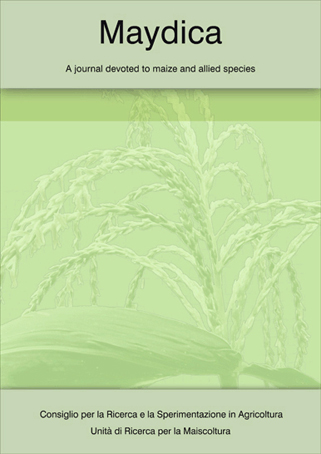Ver ítem
- xmlui.general.dspace_homeCentros e Institutos de InvestigaciónCIAP. Centro de Investigaciones AgropecuariasInstituto de Investigación Animal del Chaco SemiáridoArtículos científicosxmlui.ArtifactBrowser.ItemViewer.trail
- Inicio
- Centros e Institutos de Investigación
- CIAP. Centro de Investigaciones Agropecuarias
- Instituto de Investigación Animal del Chaco Semiárido
- Artículos científicos
- Ver ítem
Heat stress in maize : characterization and phenotypic plasticity
Resumen
The future challenge will be to produce more maize and other crops, in stressed environments. Two experiments were carried out during the 2015-2016 season at INTA Leales field, Tucumán, Argentina. The treatments included a factorial arrangement of two thermal environments (non-stress and heat stress) and 15 hybrids (Exp.1) and 6 maize inbred lines (Exp.2). The hybrids and inbred lines showed phenotypic variability in most of the evaluated
traits for heat
[ver mas...]
The future challenge will be to produce more maize and other crops, in stressed environments. Two experiments were carried out during the 2015-2016 season at INTA Leales field, Tucumán, Argentina. The treatments included a factorial arrangement of two thermal environments (non-stress and heat stress) and 15 hybrids (Exp.1) and 6 maize inbred lines (Exp.2). The hybrids and inbred lines showed phenotypic variability in most of the evaluated
traits for heat stress during critical period for kernel set. The tropical genotypes (HS9, HS10 and L3) were identified as tolerant, while genotypes with a temperate x tropical and temperate genetic background (HS13, HS14 and L5) were identified as the most susceptible. There was a grain yield reduction of 82% and 78% in H13 and L5, respectively when comparing the non-heat stress environment with heat-stress environment. Range in phenotypic
plasticity was similar for hybrids and inbred lines, being the largest for trait such as, grain yield, kernel number, anthesis-silking interval, harvest index, and the smallest for traits such as kernel weight, ear diameter, prolificacy, aboveground biomass at physiological maturity, cumulative thermal time to silking and leaf greenness post stress on ear leaf. The outcomes from this research are promising for future heat-stress screening, in order to increase
the selection efficiency in a breeding program.
[Cerrar]

Fuente
Maydica 65 (3) : 1-16 (2020)
Fecha
2020
Editorial
CREA Journals
ISSN
2279-8013
Documentos Relacionados
Formato
pdf
Tipo de documento
artículo
Proyectos
(ver más)
INTA/PNCYO-1127042/AR./Bases ecofisiológicas para el mejoramiento genético y la calidad diferenciada de cereales y oleaginosas.
Palabras Claves
Derechos de acceso
Abierto
 Excepto donde se diga explicitamente, este item se publica bajo la siguiente descripción: Creative Commons Attribution-NonCommercial-ShareAlike 2.5 Unported (CC BY-NC-SA 2.5)
Excepto donde se diga explicitamente, este item se publica bajo la siguiente descripción: Creative Commons Attribution-NonCommercial-ShareAlike 2.5 Unported (CC BY-NC-SA 2.5)


